Managing a crisis is like wrestling with a giant Octopus. There are many tentacles your crisis leaders must be trained to understand and manage. Four of those tentacles are public emotions: shock, fear, grieving and anger. These emotions can skew the public’s normal thought processes and often override facts during a crisis. Therefore crisis leaders and crisis teams must understand how to work with emotions, because much of the outcome of your crisis response hinges on how the public feels about your organization. As you read the following about the four stages of crisis emotions, think about how your organization should respond. Then, in the future notice how other companies respond to these emotions when they experience a crisis.
EMOTION No. 1 – SHOCK
Shock is the first tentacle of emotions during a crisis. How many times have you watched news coverage of a crisis and the eye-witnesses express their shock over the event? A crisis is like a powerful rip tide. People feel knocked off their feet as they struggle to get direction on what to do when a crisis occurs. They have a million questions. This is true in any crisis – whether it is an explosion, fire, food-borne illness, corporate scandal, workplace violence, or a cyber security breach.
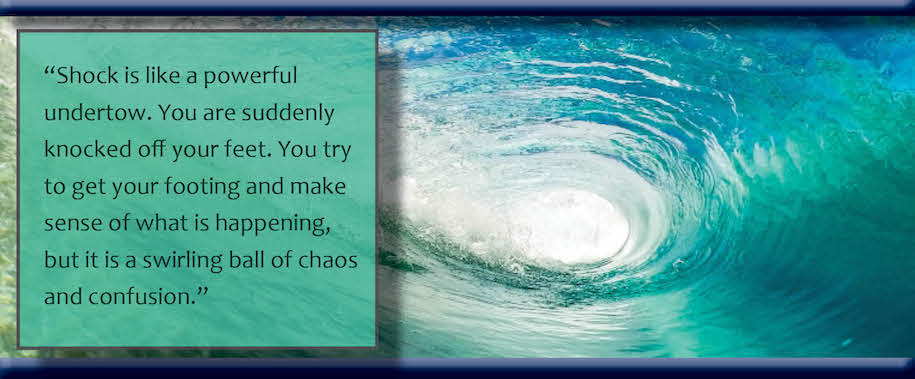
Shock is immediate during a tangible crisis like the 9-11 terrorist attacks. People could not believe what they were seeing as the news showed the buildings falling in New York. Some times shock is delayed in less tangible crises. This was the case with the Covid-19 pandemic; the public kept hearing news about a virus in other countries. Then shock set in as the USA and other countries started shutting down.
Organizations in Crisis: The emotion of shock is a key reason why organizations must have a timely crisis response. A significant delay in responding to the public is a costly mistake with many repercussions. An immediate acknowledgment that your company is aware of the situation and has mobilized a special crisis team gives people some comfort. This can help to soften the level of shock and disbelief.
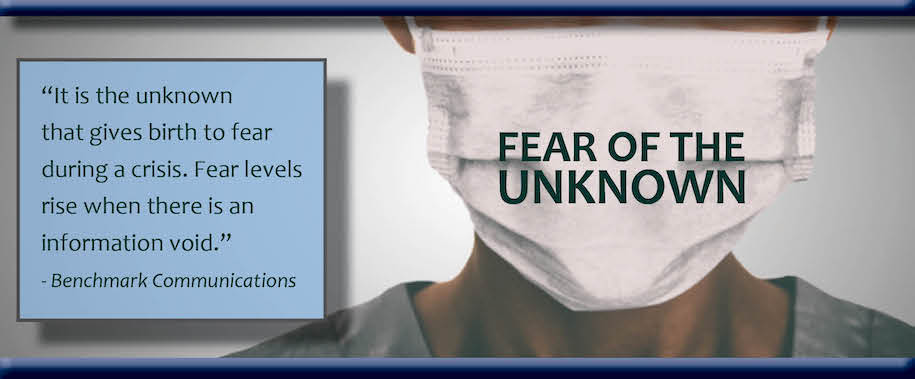
EMOTION No. 2 – FEAR
Fear is the second tentacle of emotions during a crisis. Chipotle learned about the power of public fear when E. coli outbreaks struck their restaurant chain. The company’s leaders appeared slow to comprehend how the tsunami of fear was on its way to sinking their business. Their profits plummeted 82% that year. Victims took to social media to share the terror they experienced as they struggled to overcome their illnesses. Daily the news media featured other victims, and their stories quickly turned Chipotle stores into ghost towns. For months the company could not even give its food away. Meanwhile, as part of their crisis response Chipotle’s Co-CEO spoke at an investor’s conference and blamed the CDC and news media for increasing public fears.
Organizations in Crisis: It is the often the unknown that gives birth to fear during a crisis. Therefore organizations must fill the information void and get in front of a story to establish itself as “the” leader of timely and accurate information. People need to hear and see tangible evidence that a company has a clear action plan to address the situation. Otherwise fear levels will rise. Organizations must communicate often and be visual!
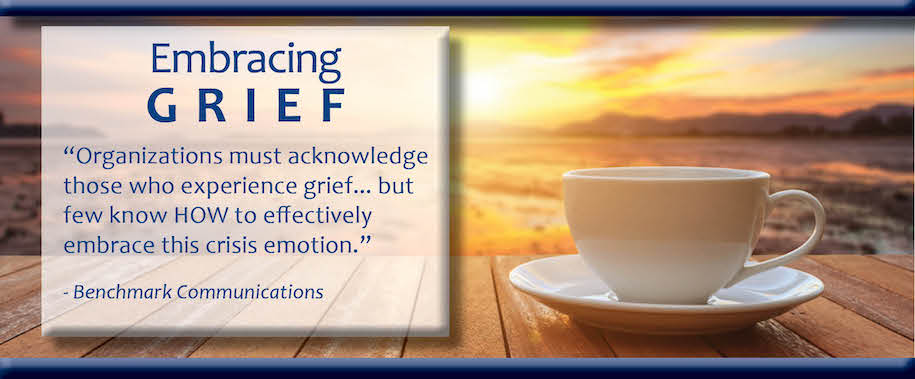
EMOTION No. 3 – GRIEVING
The third tentacle of emotions during a crisis is grieving. People grieve over the loss of life or harm to life. They also grieve over other things, too: property loss, loss of feeling safe, lost routines, lost quality of life, environmental damage and more. This typically occurs as shock and fear wears off and people begin facing the realities of the near- and long-term impact.
It is crucial that organizations genuinely acknowledge grief and what people are experiencing. To ignore this and trot out a spokesperson who delivers a data dump will not win public approval. Sadly, Former BP CEO Tony Hayward’s name will live on forever in crisis case studies for saying he “wanted his life back” as eleven families were still grieving the death of their loved ones in the Deepwater Horizon tragedy.
At the other end of the spectrum is Maple Leaf Foods‘ crisis response. Twenty Canadians died from eating the company’s listeria-ladened meat. The company had a small communications team, yet they communicated quickly through many sources to tell the public what they needed to know. At the heart of Maple Leaf’s response was, “Do the right thing”. CEO Michael McCain spoke directly to the public via social media and television commercials to give updates and apologize to everyone who lost loved ones. He came across as human – a quality often lacking in many spokespersons. Canadians found him to be credible and compassionate. Later, the Canadian press named McCain Canada’s Business Newsmaker of the Year.
Organizations in Crisis: When an organization has a crisis that results in grieving over losses, it is crucial you respond in a “human” way and not as a lawyer-packed crisis team. Enlightened lawyers DO play an important role on an organization’s crisis response! The public needs to perceive that you feel their pain. In addition, they need tangible evidence of what you are doing to make things right.
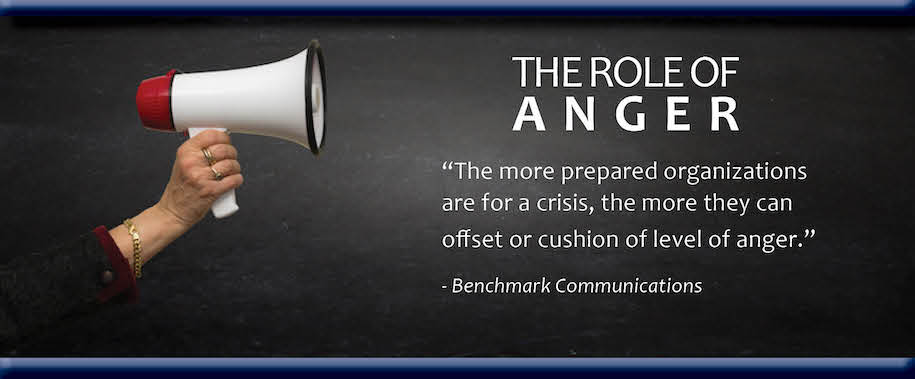
Emotion No. 4 – Anger
Anger is typically the last tentacle to materialize during the crisis cycle. Public anger is almost guaranteed when an organization’s crisis response fails to align with the first three stages of emotions. People gravitate toward anger as they begin digesting more information and questioning things. If the company has failed to answer public concerns, the opportunity for anger escalates. (There are other elements that also determine anger levels.)
There are countless textbook examples where the tentacle of public anger lashed out at the organization delivering the crisis. This occurred when a Bayer Crop Science pesticide facility exploded one night in Institute, West Virginia. Two employees lost their lives, and eight others were injured. From the start Bayer failed miserably at communicating with key stakeholders. Watching the news coverage you could see public anger building daily. It spilled over into a community meeting with the media, regulatory officials and local leaders in attendance. Oh, but Bayer Crop Science was a no show! During a crisis “everything” you do communicates, and Bayer communicated when they chose not to show up.
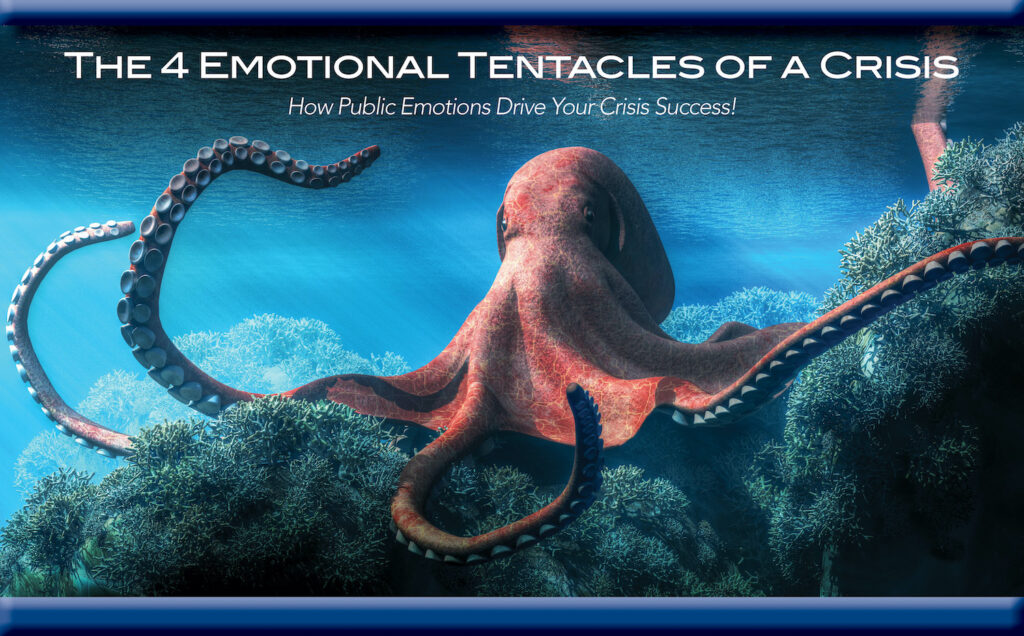
Crisis Plans & Crisis Training That Consider Emotions
Solid crisis plans and crisis training should equip an organization’s leaders and communicators with a roadmap on key steps and strategies to implement during a crisis. The better plans include assessment models to consider the impact of these four public emotions. Your crisis teams can make better decisions by being mindful of the role of emotions during your crisis response.
If you want to update your crisis plans or schedule training to equip your people with the strategies they need to succeed to deliver a better crisis communications response, contact us today.

